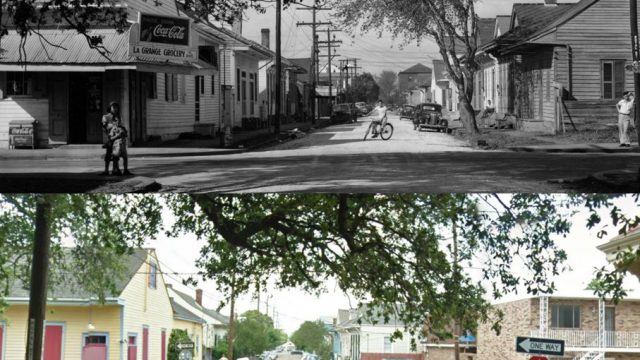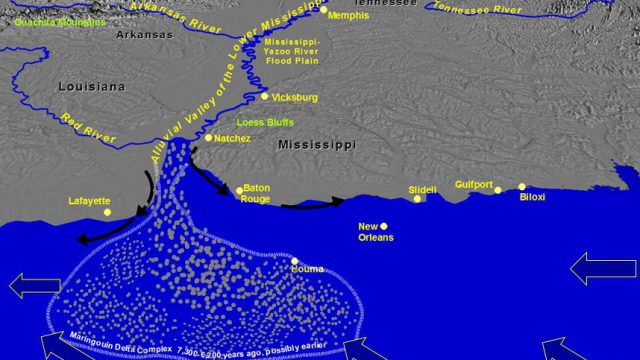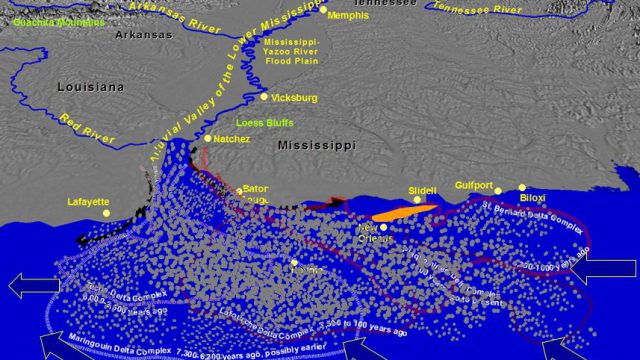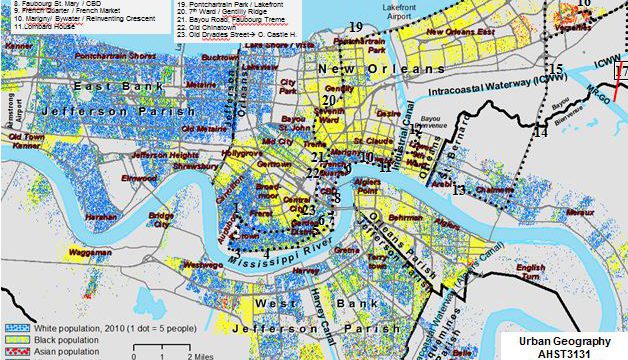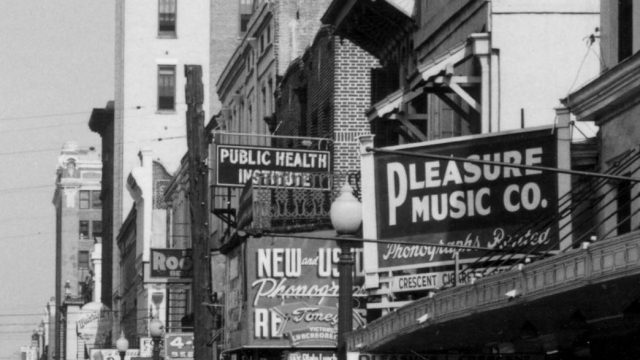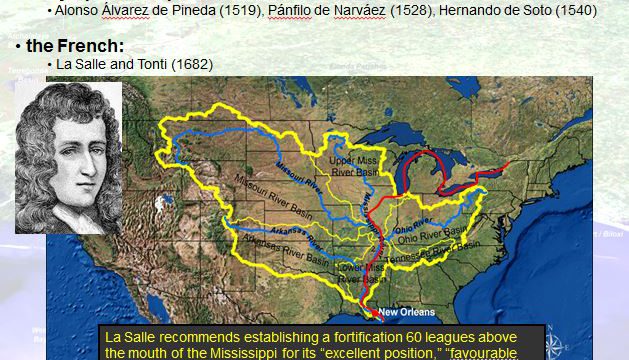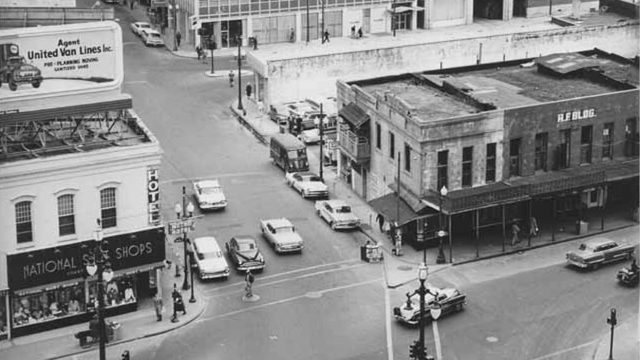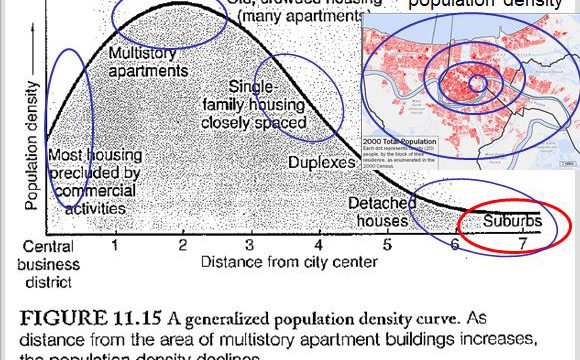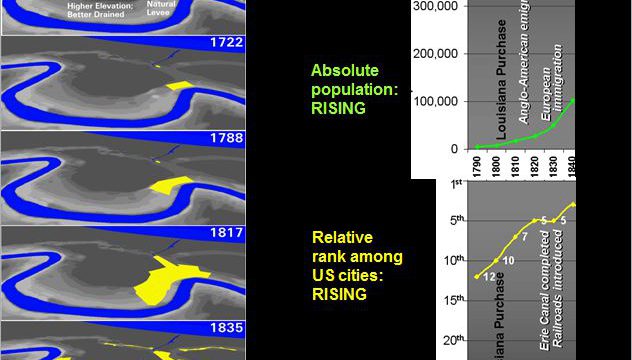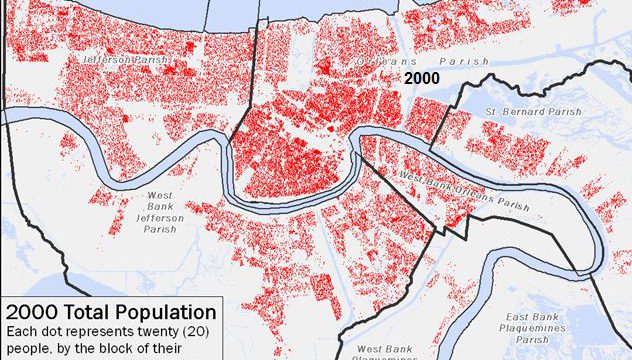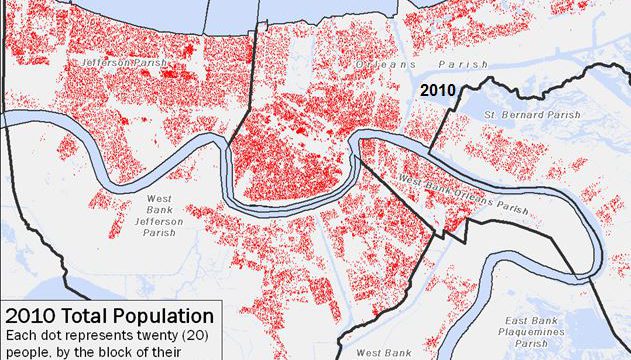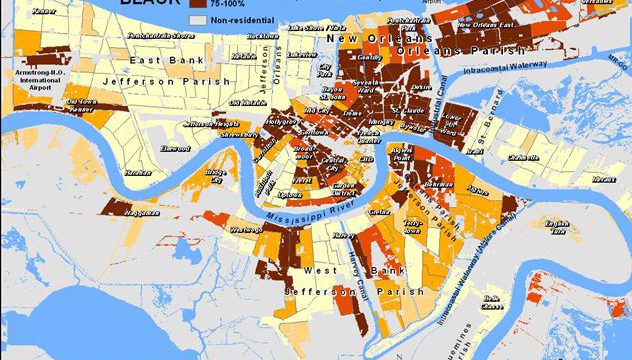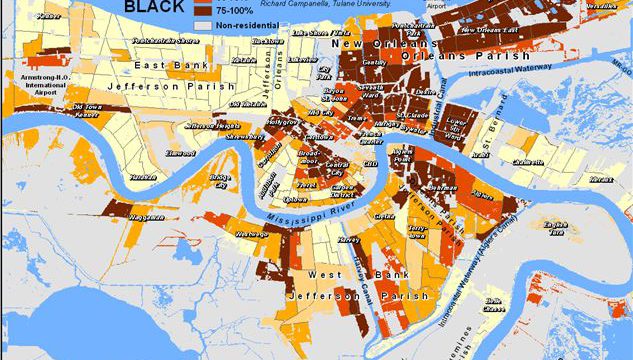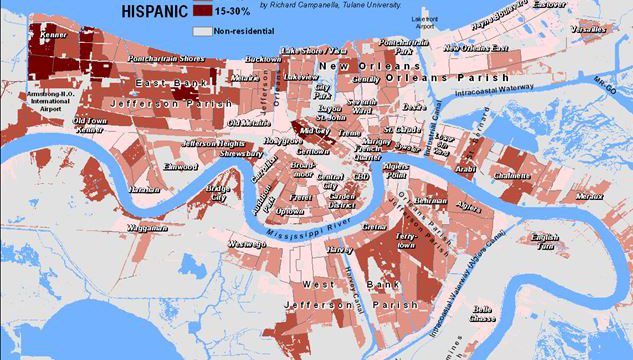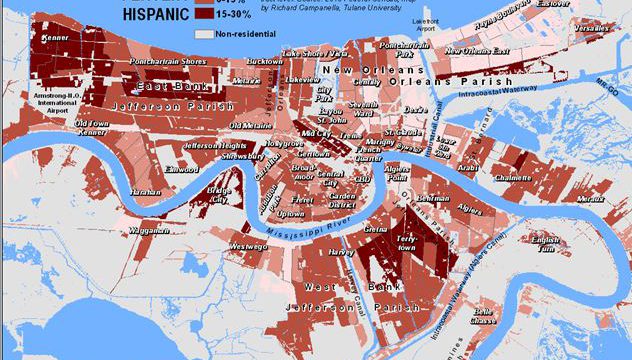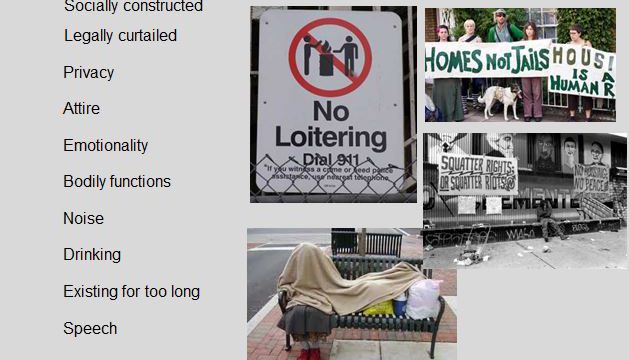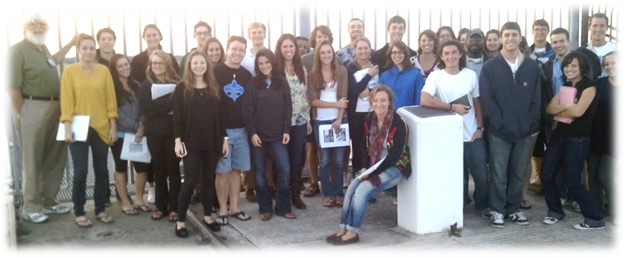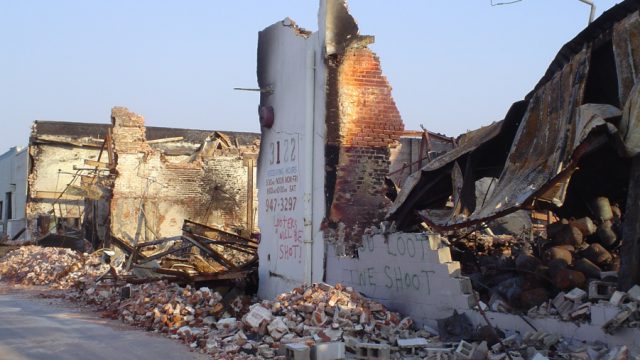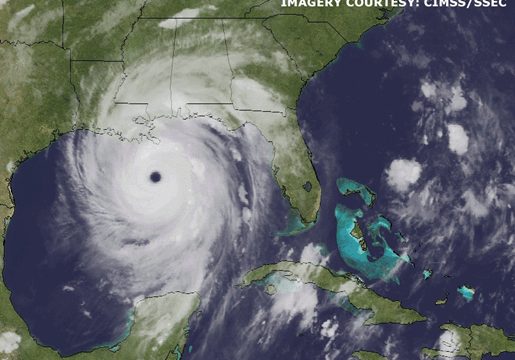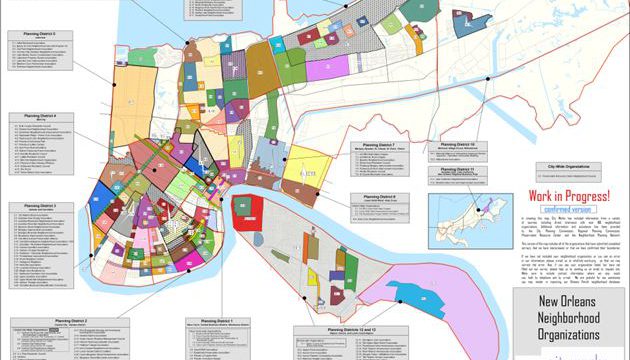This three-credit class, taught by geographer and Senior Professor of Practice Richard Campanella, is offered each fall through the Tulane School of Architecture. Open to all with no prerequisites, AHST3131 is approved as an elective course for the New Orleans Center for the Gulf South’s Musical Cultures of the Gulf South major. The class explores how to analyze cities spatially, using New Orleans as a detailed case study. We will tackle this subject through lectures, discussion, field trips, film, research, and presentations. Students will apply these guiding geographical questions to urban places:
- What is the shape, form, and origin of the city’s physical landscape?
- How have humans transformed and manipulated that landscape into a cityscape?
- How are phenomena spatially distributed or diffused, why, and how have those patterns changed over time?
- How may we research, depict, characterize, and interpret those patterns?
- How are power, class, race, and inequity involved in use of space and the allocation of urban resources?
- How can we use geographical knowledge to restore and improve disturbed places or patterns?
- What distinguishes urban places from each other?
- How do people create, occupy, perceive, and contest the use of urban space?
- What clues do we see in the present-day cityscape that shed light on the above questions?
Prof. Campanella is the author of six critically acclaimed books on the geography of New Orleans, including Bienville’s Dilemma and Lincoln in New Orleans. His research has been praised in Southern History, Urban History, Places, Journal of the Abraham Lincoln Association, Louisiana History, and elsewhere. The only two-time winner of the Louisiana Endowment for the Humanities “Book of the Year” Award, Campanella has also received the Williams Prize for Louisiana History, the Mortar Board Award for Excellence in Teaching from Newcomb College Institute, and the Monroe Fellowship from Tulane’s New Orleans Center for the Gulf South. His next book, Bourbon Street: A History, will be released by LSU Press in 2014.

